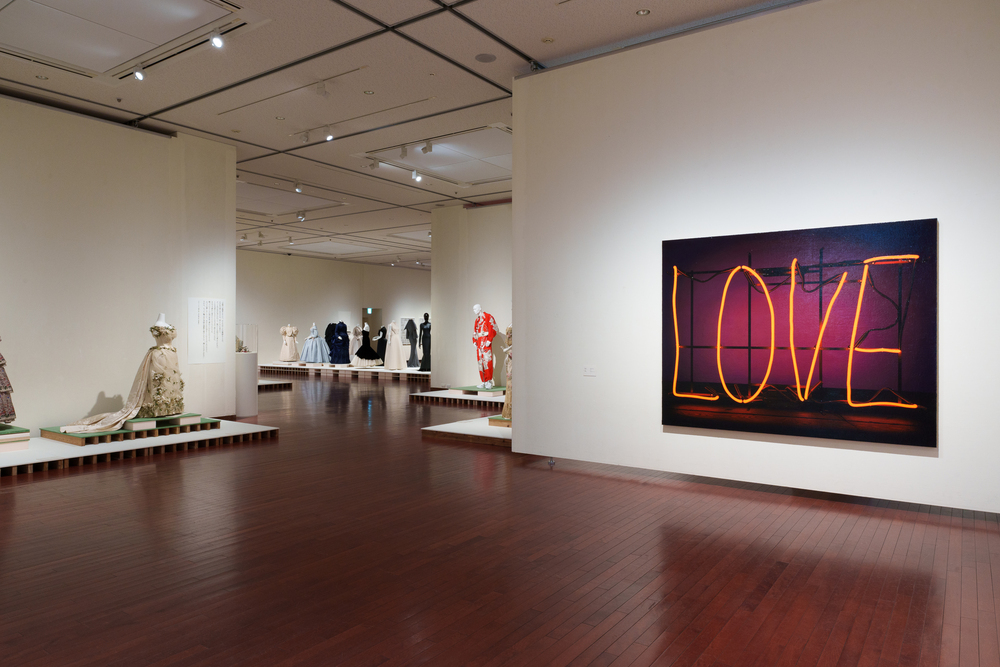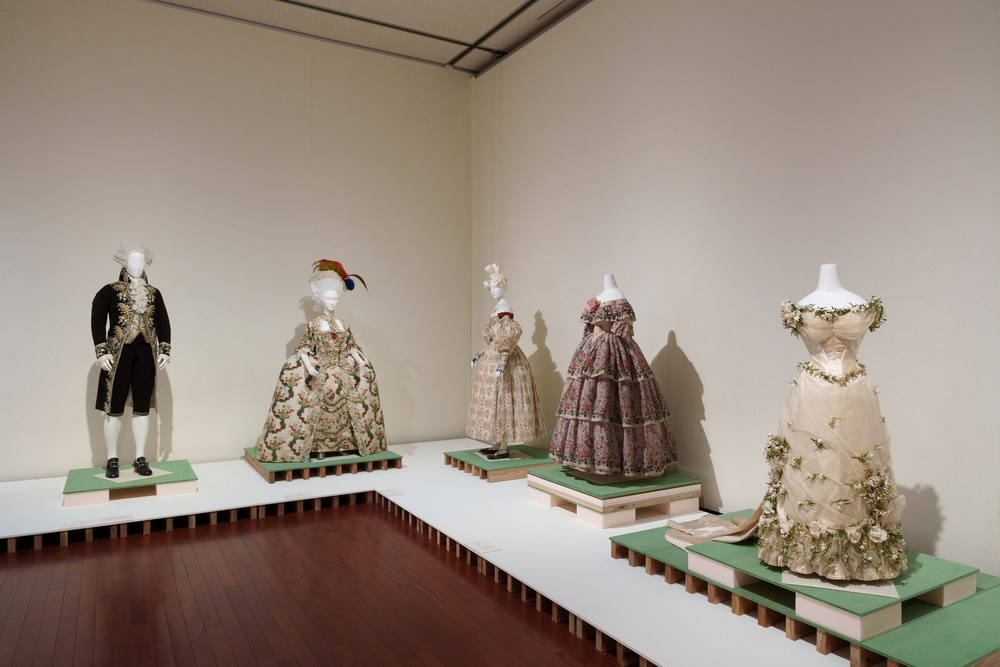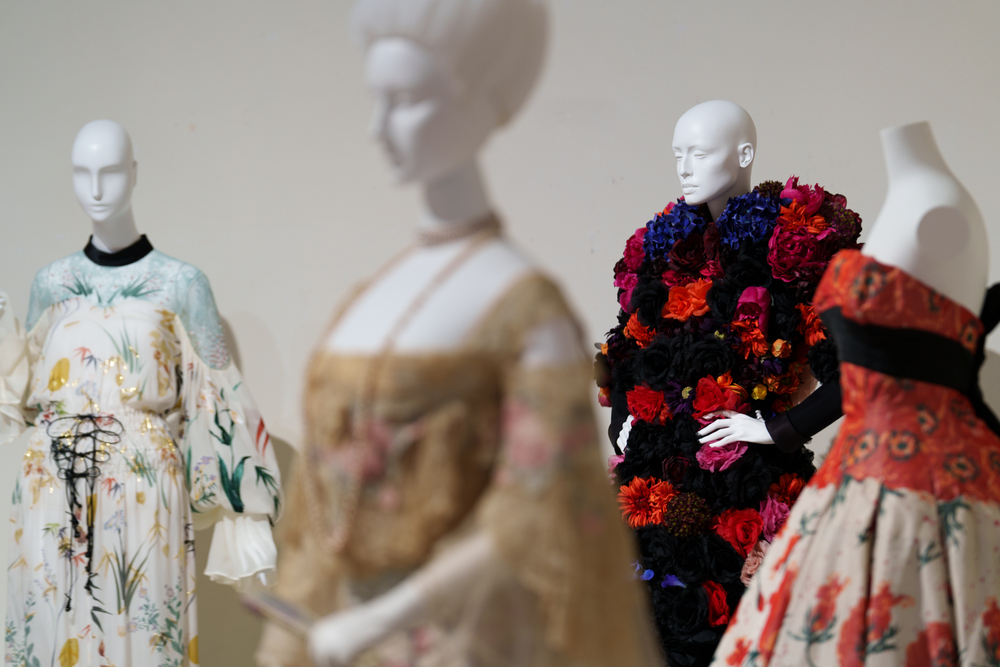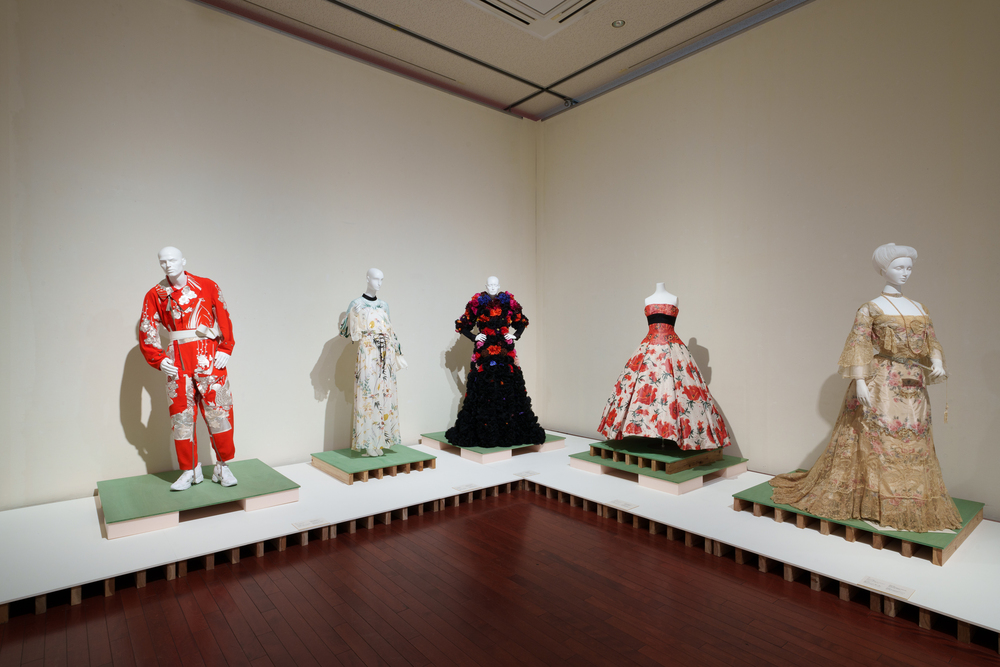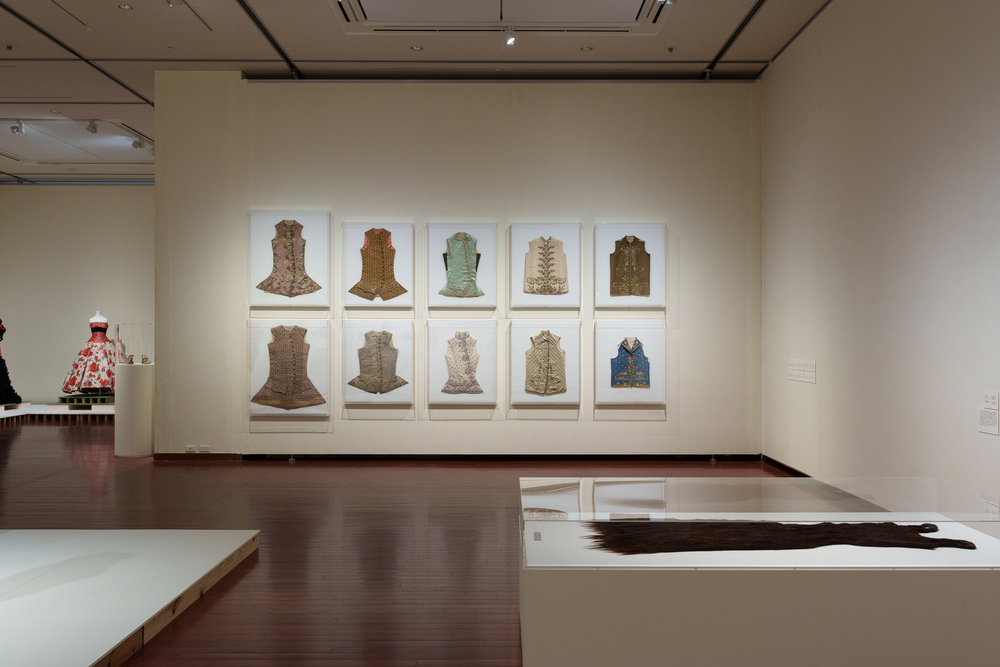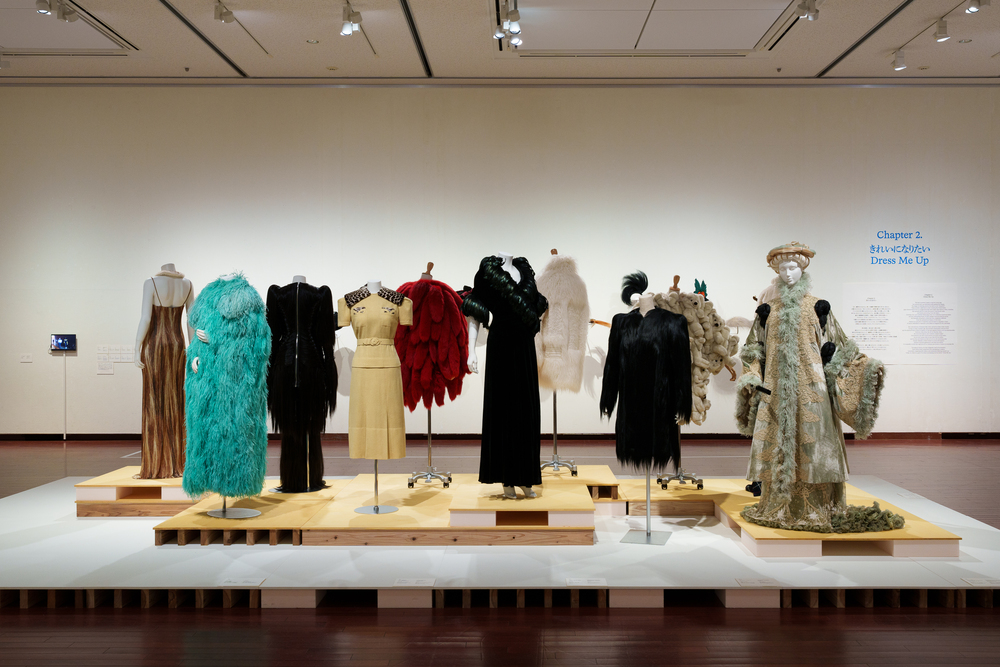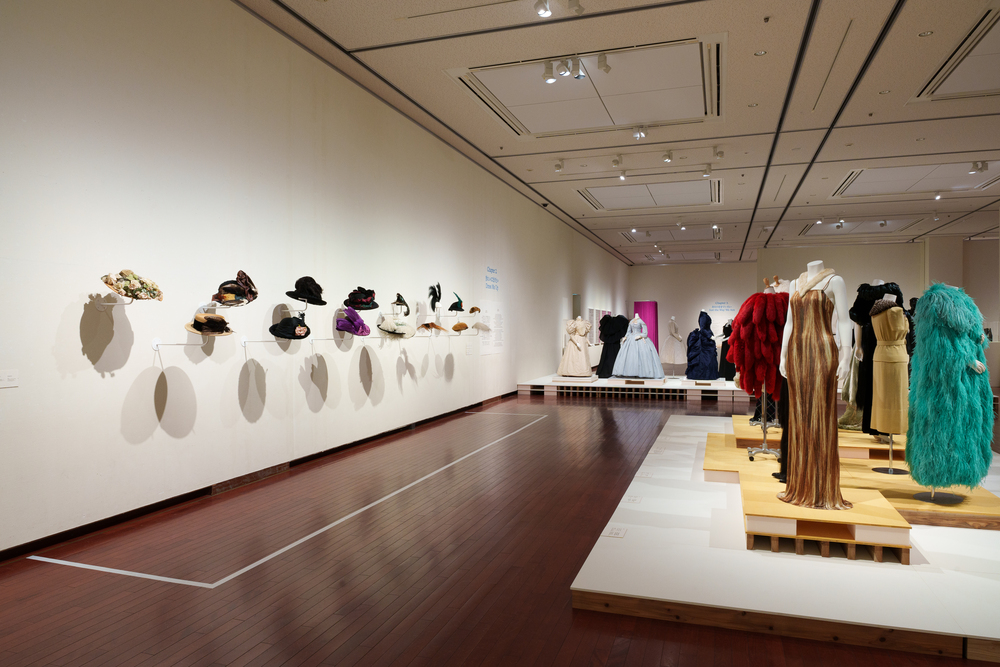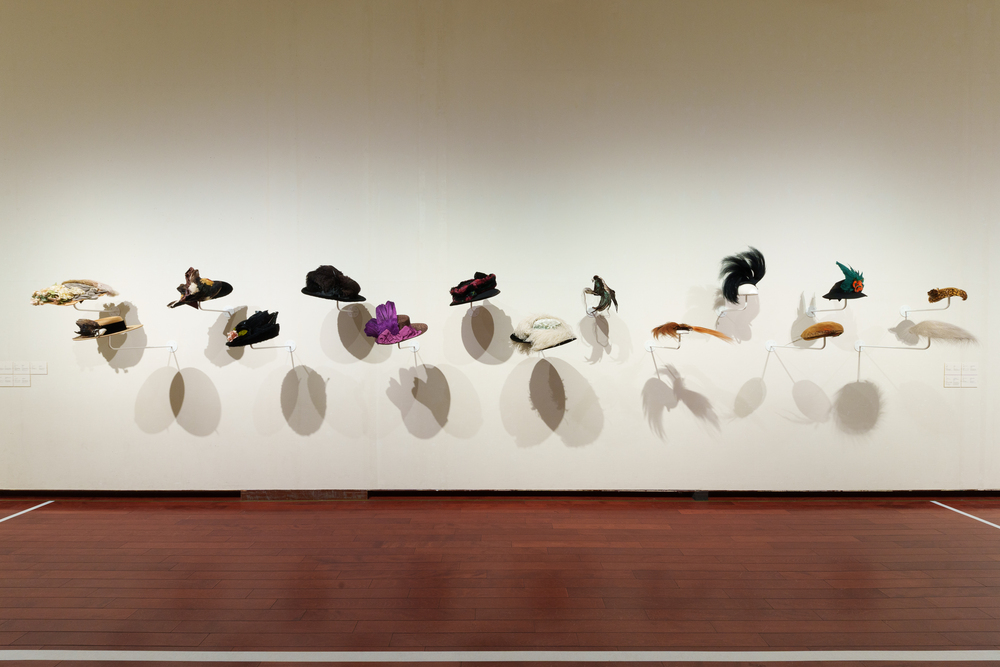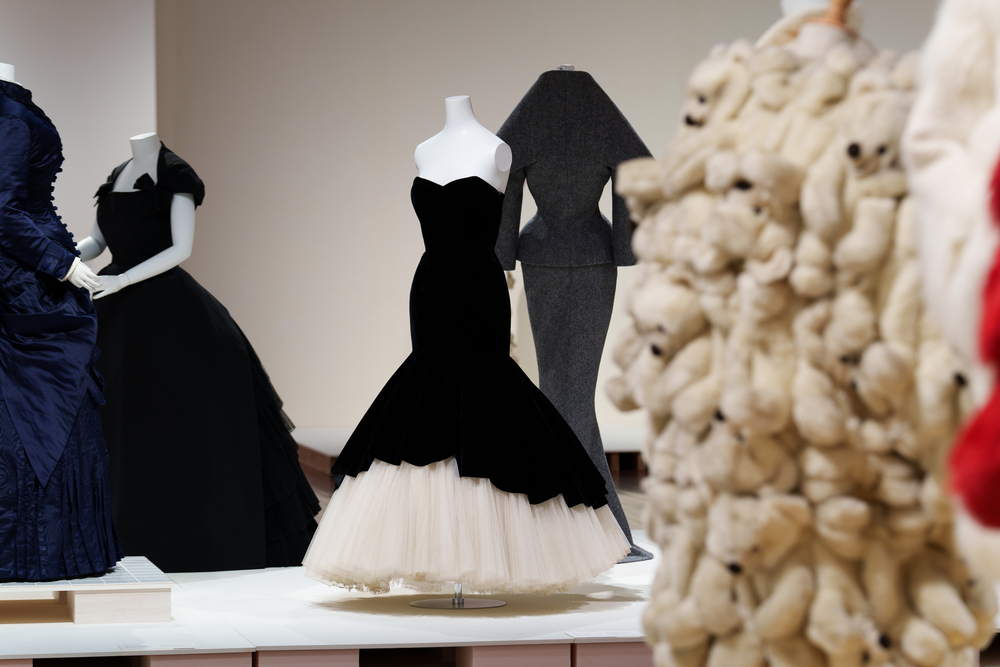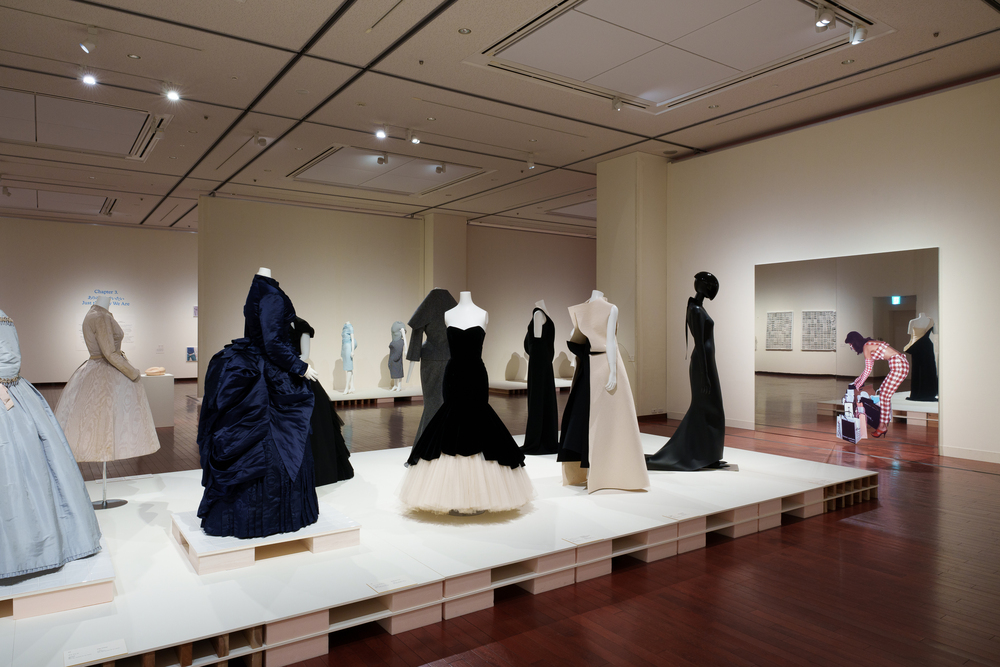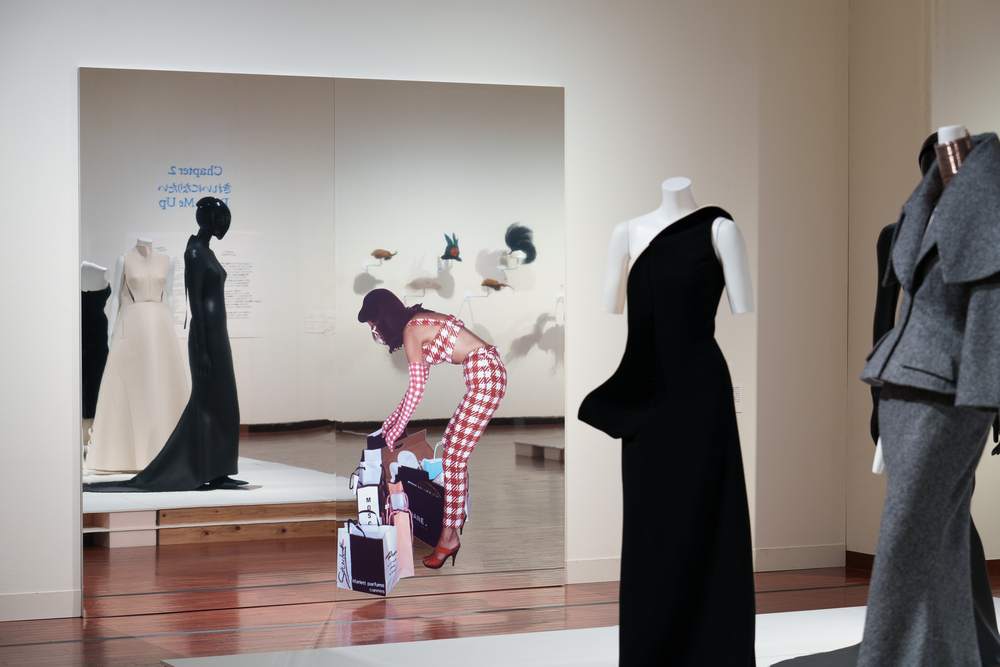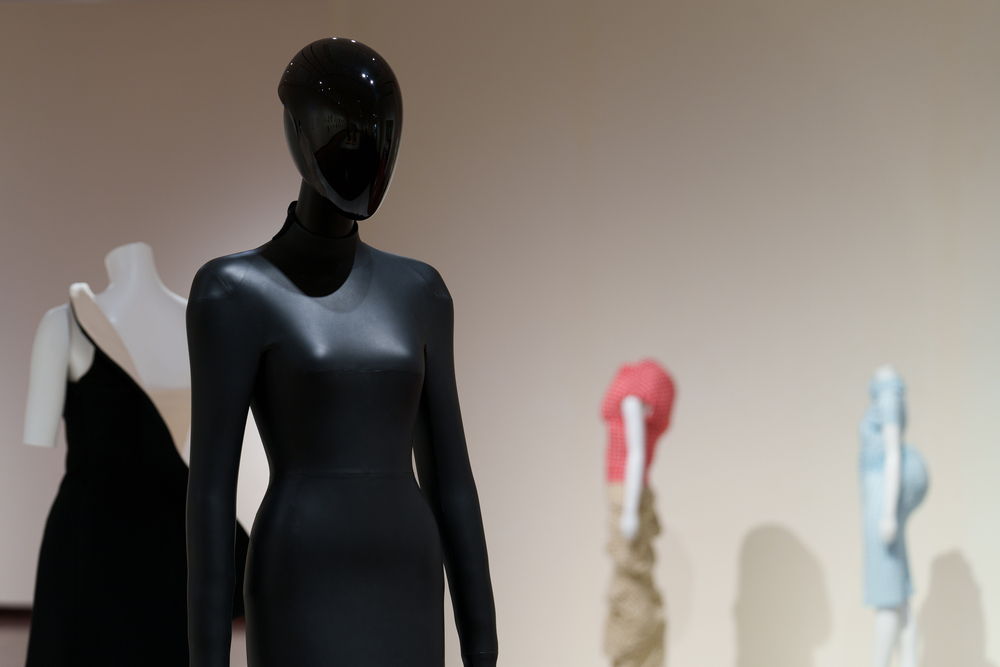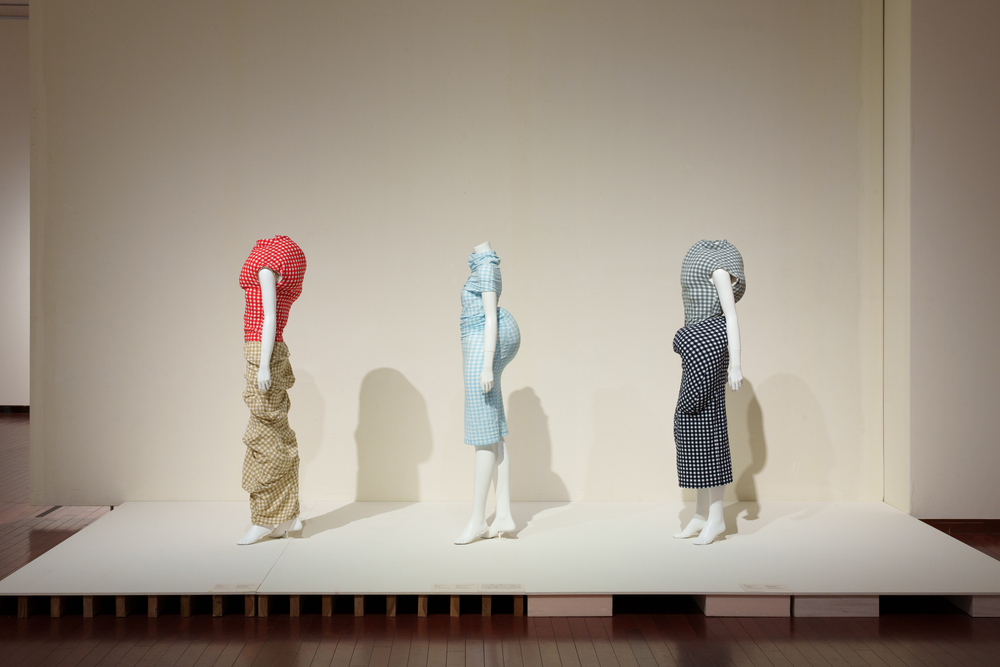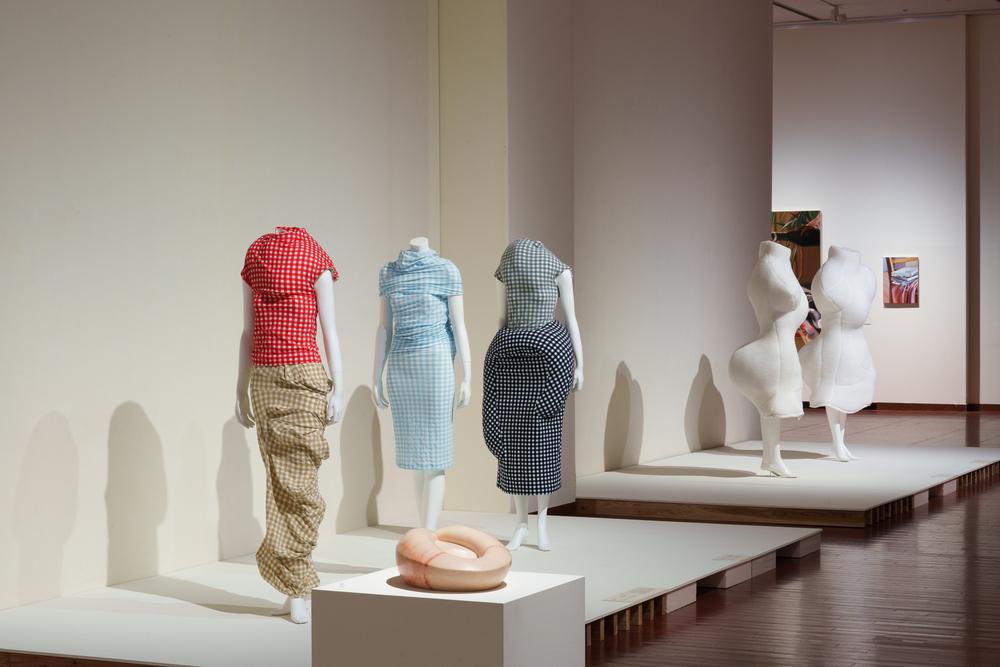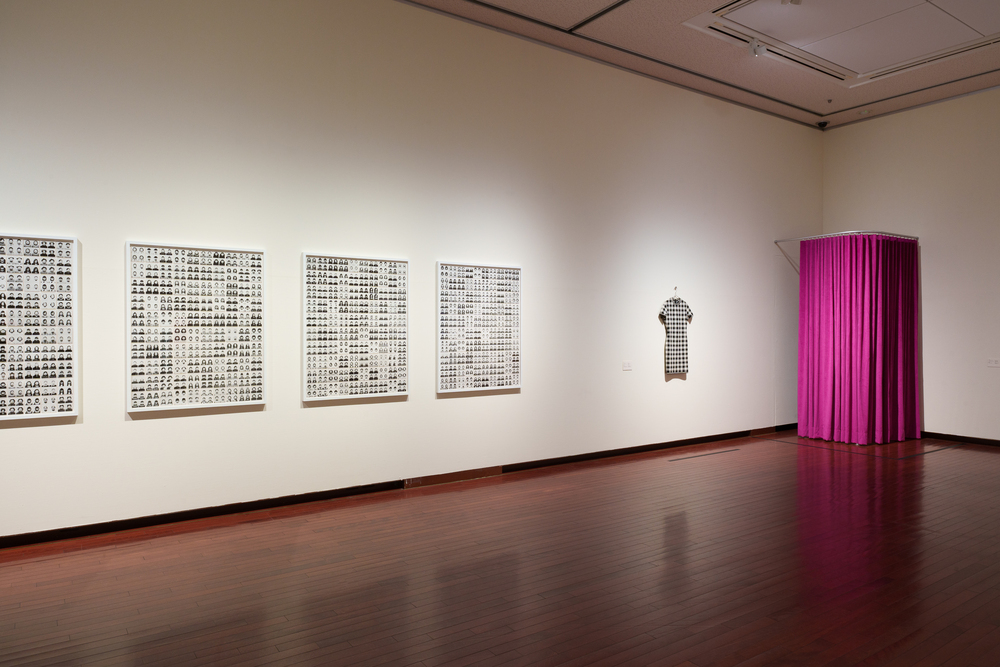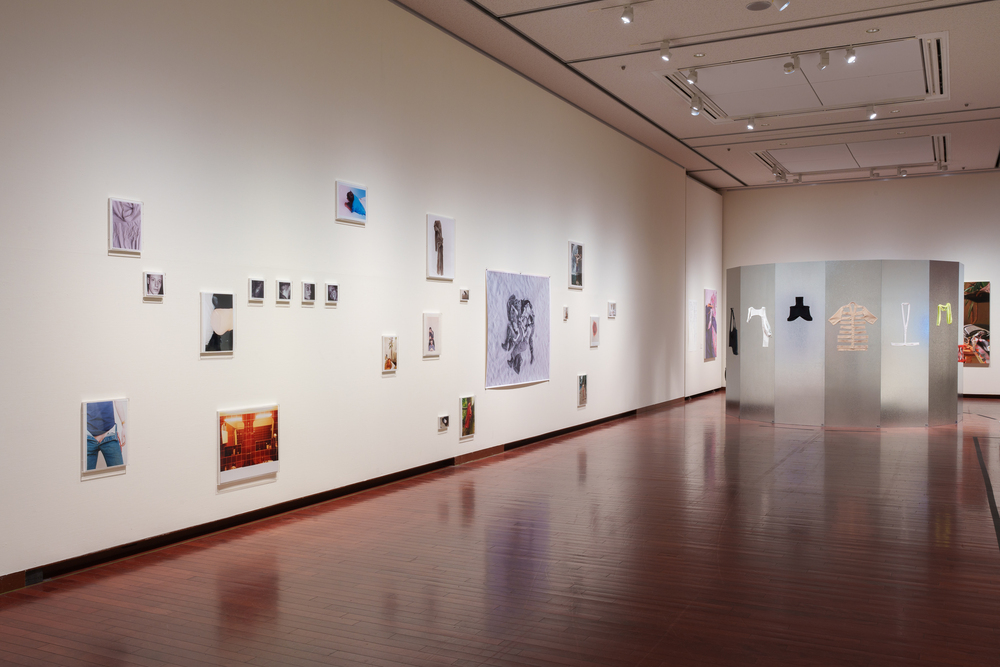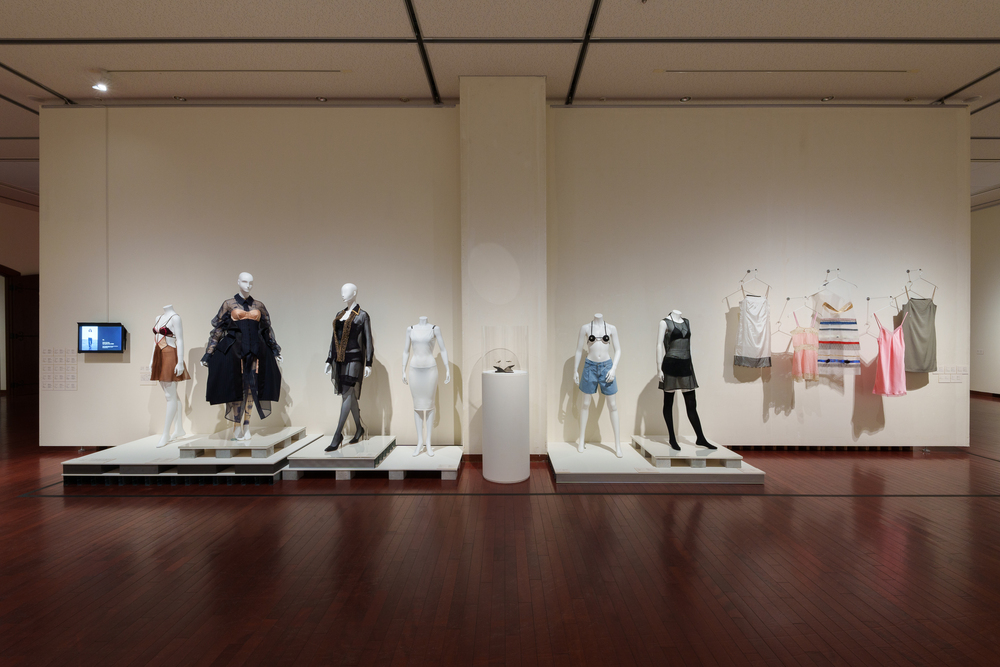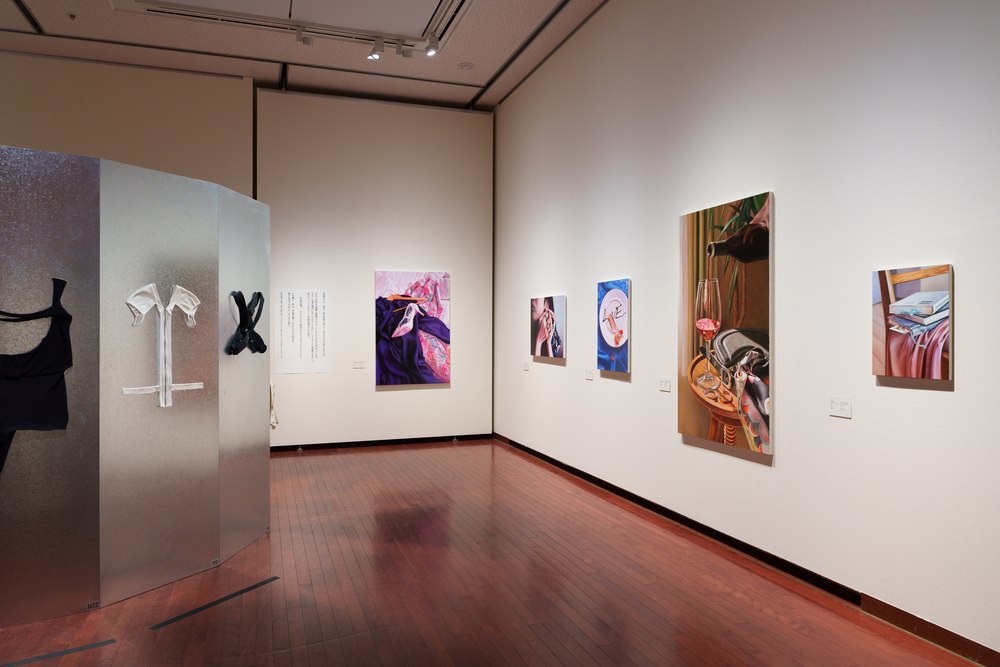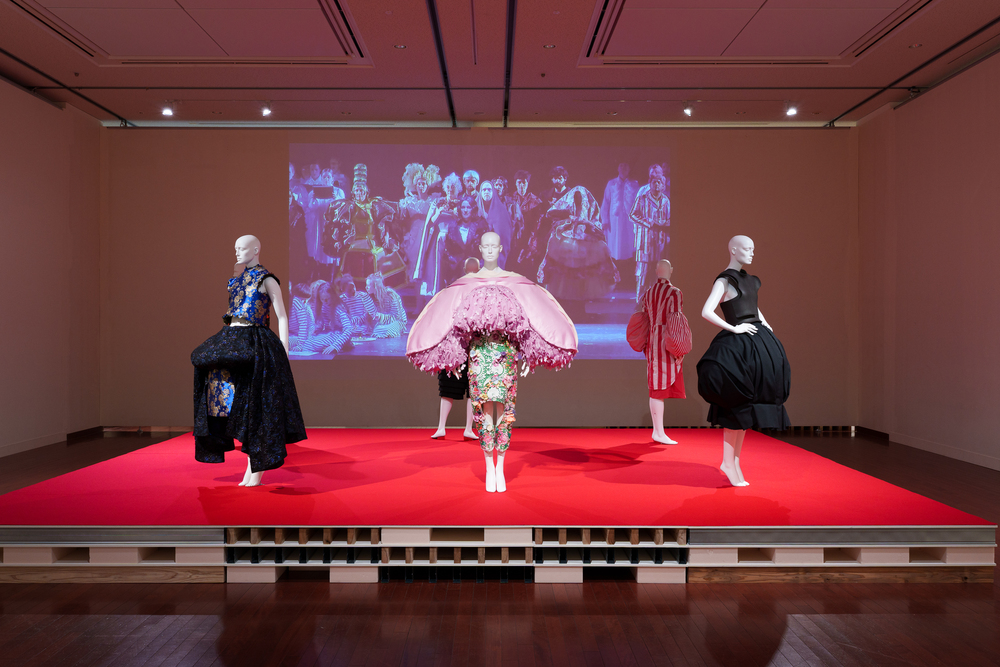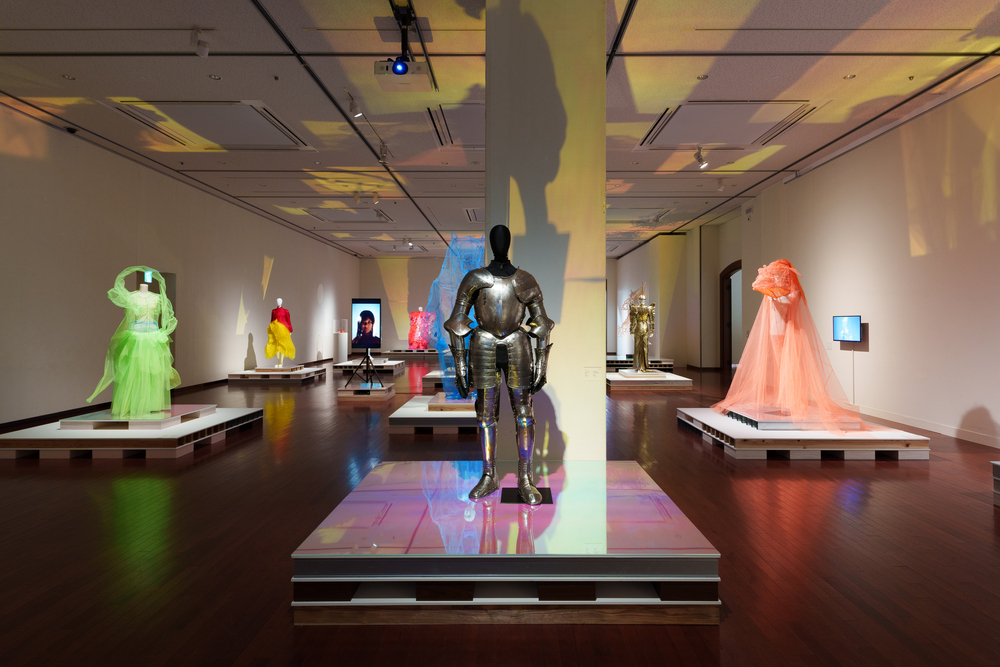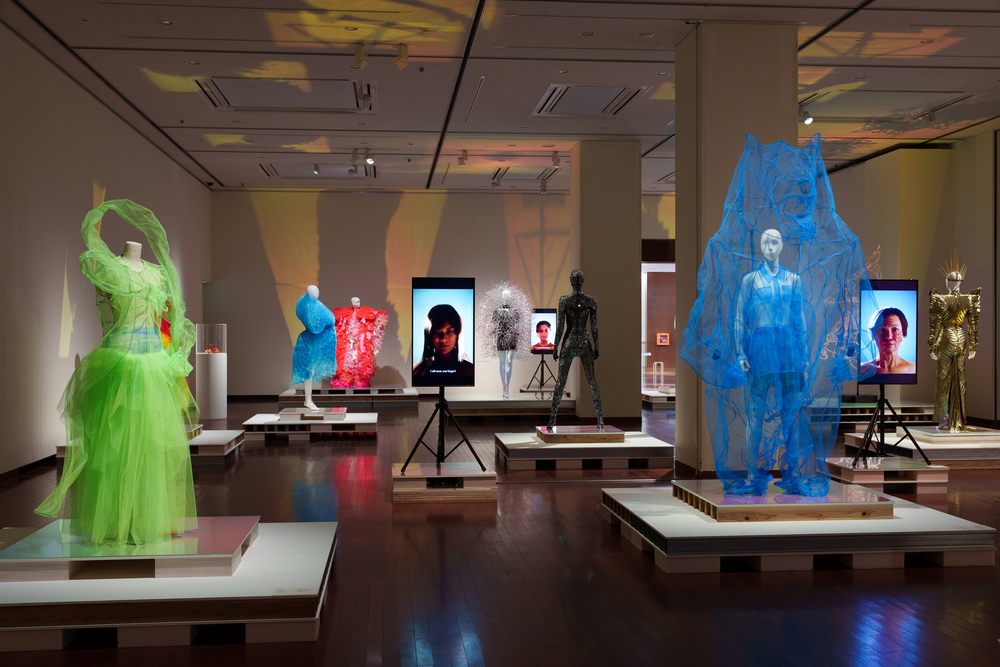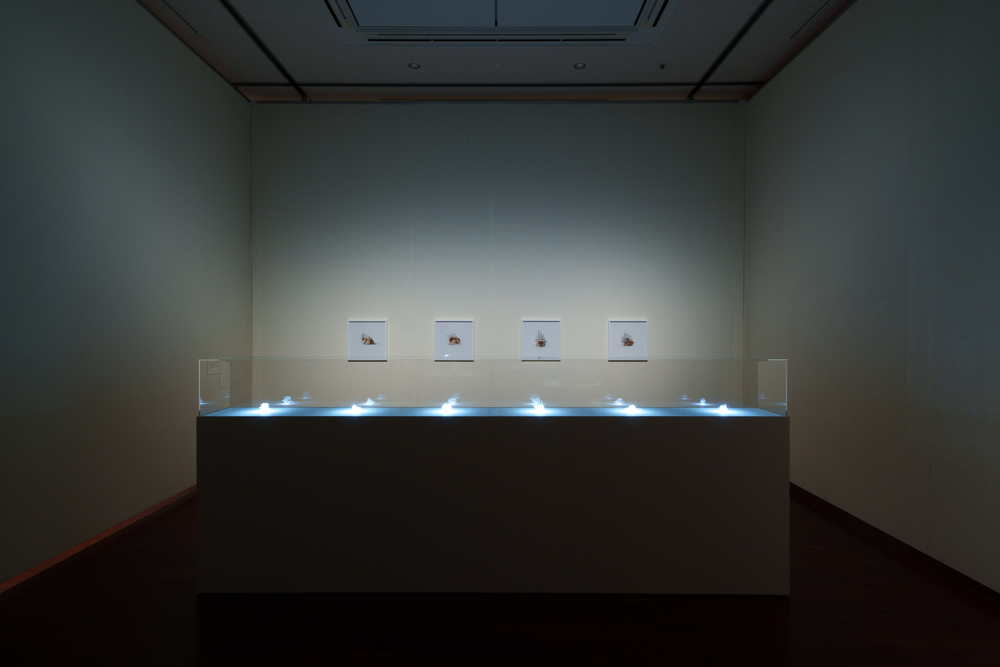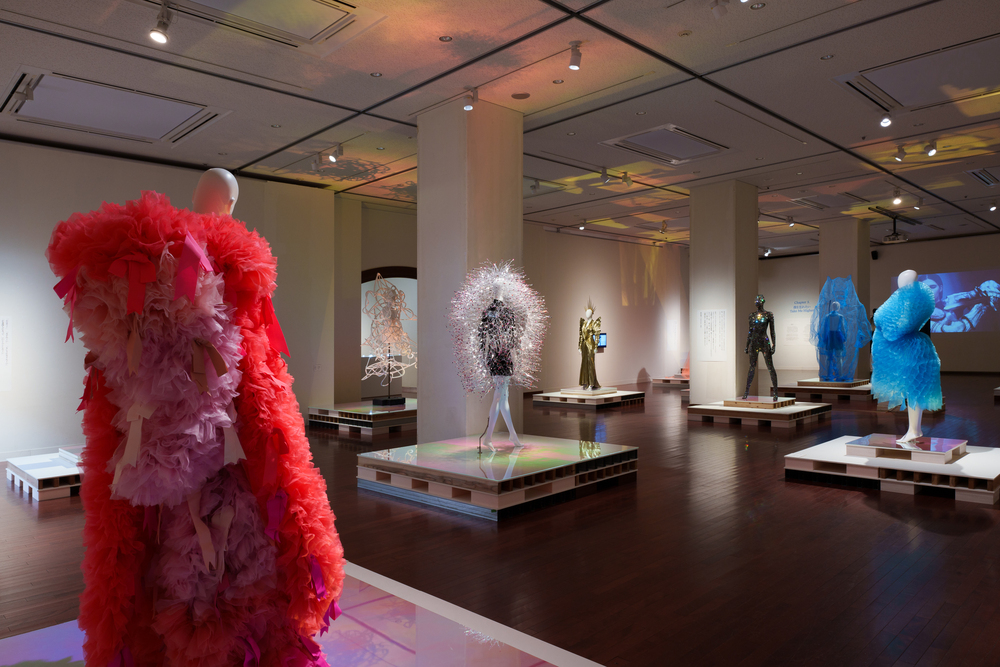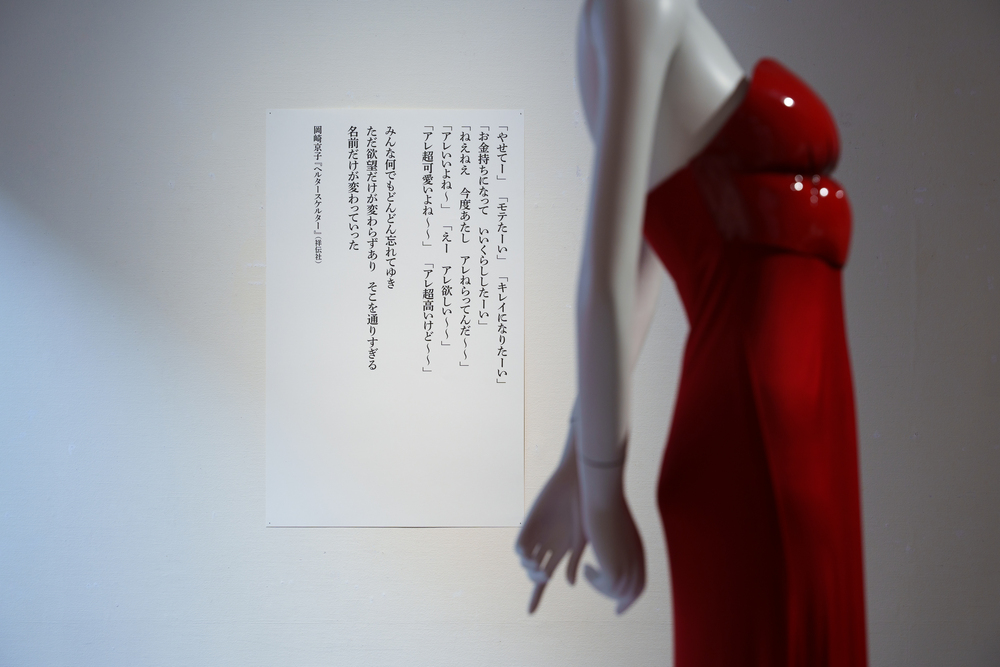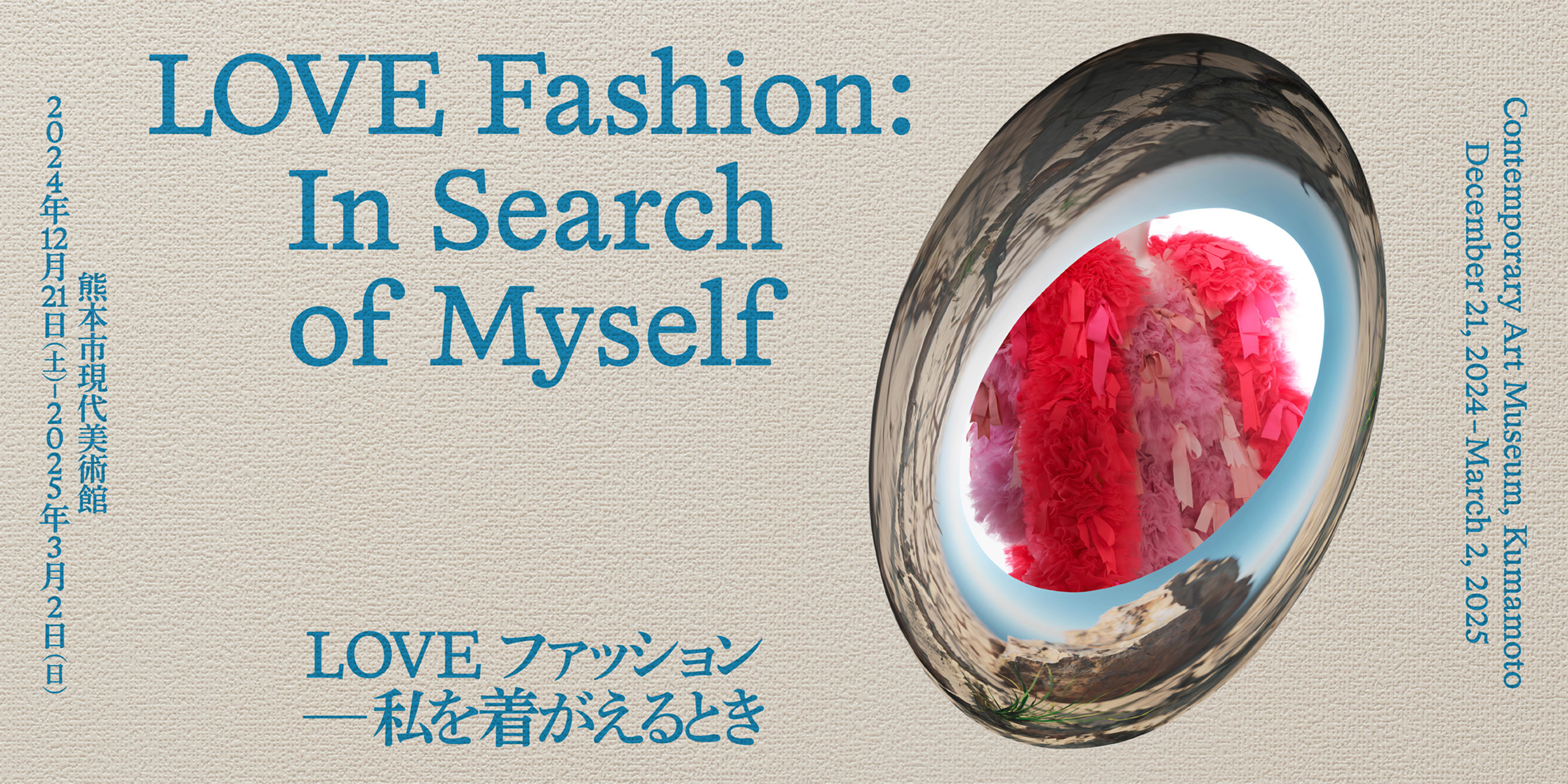
Love Fashion: In Search of Myself
December 21 (Fri.), 2024–March 2 (Sun.), 2025
Chapters
-
Chapter 1.Born to Be Nature
I want to spend my life surrounded by flowers. I want to feel the warmth of living creatures.
A sense of longing or a loving respect for nature, and the desire for nature to keep nature close at hand, are feelings that people have always had, whenever or wherever they lived.
People in ancient Greece and Rome adorned themselves with garlands or headpieces made from fresh flowers, while during the same period, people in China depicted flowers which would remain fresh forever by embroidering onto fabric. Eighteenth century European nobility―regardless of gender―vied to be the most brilliant in court by dressing themselves in garments that featured embroidered or woven floral patterns. And in the present day, we are not only drawn to flowers for their beautiful colors and shapes, but we also project, onto flowers, attributes such as love, blessings, hope and peace, incorporating such sophistication into our clothing.
Fur was one of the first materials used in clothing that nature bestowed on humankind. Our ancestors had to protect themselves with the skin and fur of animals to compensate for the elimination of body hair, the purpose of which was to protect our evolving cerebrum from heat. Perhaps due to an envy of, or obsession with what has been lost since ancient times, we have been infatuated with the touch and warmth of fur, while we have adorned our clothing with bird feathers and gathered beautiful and rare materials from around the world, which in turn has triggered the extinction of countless species and the destruction of ecosystems.
Nature now needs to be protected. As a result, our affection and love for nature is even deeper. Jean-Charles de Castelbajac and Stella McCartney’s “fur -free” fur coats convey our deep affection for fur, which could almost be described as perverse. The emotions that we seem to retain with respect to our remaining body hair are evident in the works of Motohiko Odani, who uses human hair as his material. When exactly will we be able to return to nature?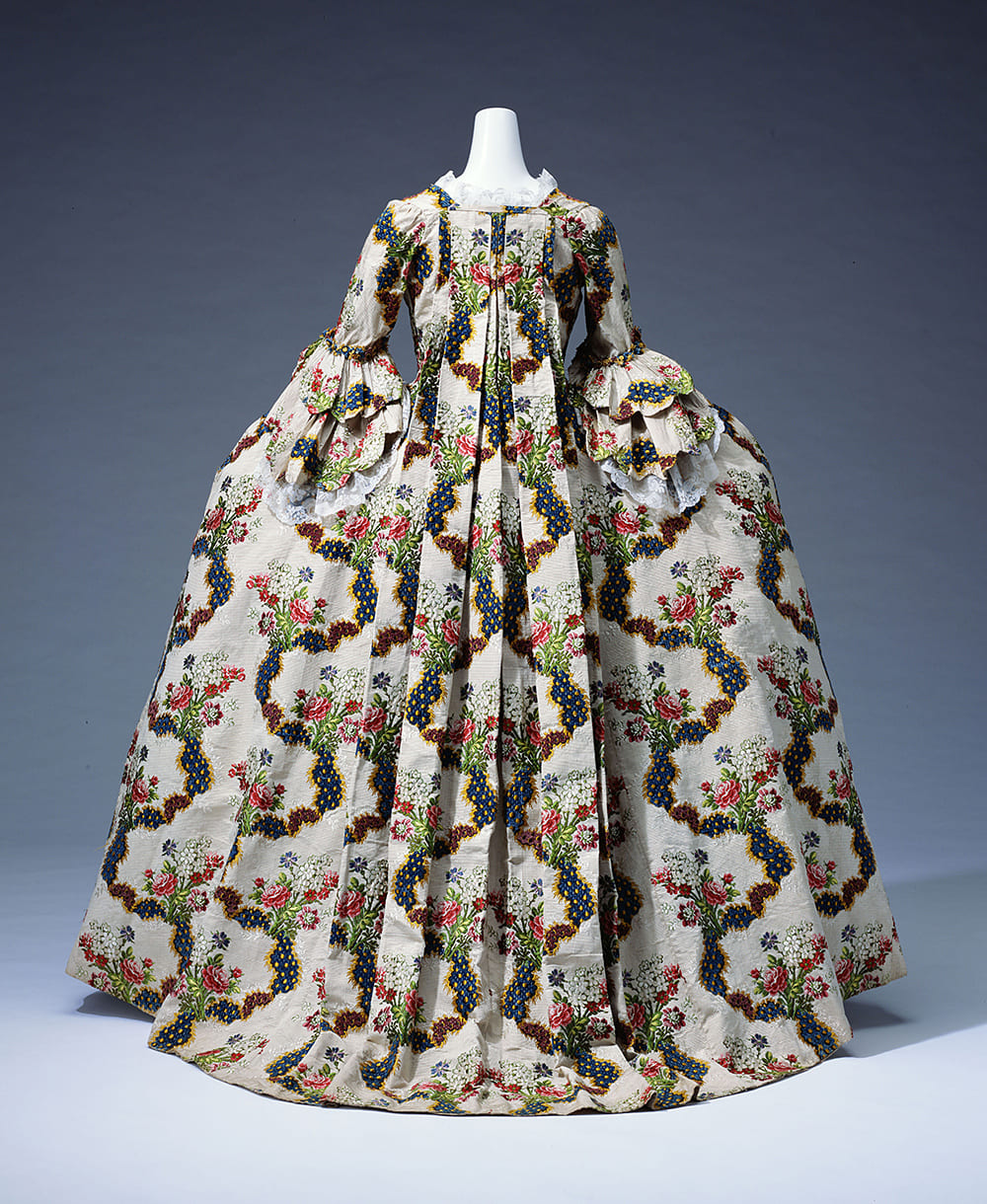
Dress (robe a la française) 1775 (fabric: 1760s) © The Kyoto Costume Institute Photo by Takashi Hatakeyama -
Chapter 2.Dress Me UP
We find ourselves tossed to and fro every day, but cannnot give up admiration and passion for beauty. The shape of clothing mirrors the desire to be “beautiful”. These include a tight-laced corset creating the S-bend waist, gigot sleeves which were so exaggerated that were larger than wearer’s face, crinoline, that spreads skirts so wide the wearer could barely walk, and bustle protruding from the waist.... Christian Dior and Cristóbal Balenciaga went on to reference historical styles, and the outstanding beauty of their designs took the world by storm. Rei Kawakbo presented a form that was completely different from the symmetrical balance of the body. Fashion as a process of repetition and deviation is arguably a ‘form’ of desire embodied in response to the ideals as imagined by the individual.
The contradiction of humans who crave, and yet at times resist, beauty. Living in today’s modern age, the excessive attachment towards form and the physical body evident in fashion of the past appears bizarre and incomprehensible. However, what about the all too familiar diets, the retouched photos, and cosmetic surgery today? The hesitancy and self-consciousness as we get on the scales, the joy and unease when we get likes for our selfies, and the fear and elation we feel as we lie on the operating table. Tomoko Sawada’s ID400 homes in on the discrepancy between external appearance and what lies within. It is arguably a work that captures all too common perversion of desire in everyday life.
Throughout history, we have diligently tried to be beautiful. These efforts have sometimes been attempting to inspire, sometimes competing with others, and sometimes blacking oneself out. Today too, there is a part of us that is screaming out the words “Dress Me Up.”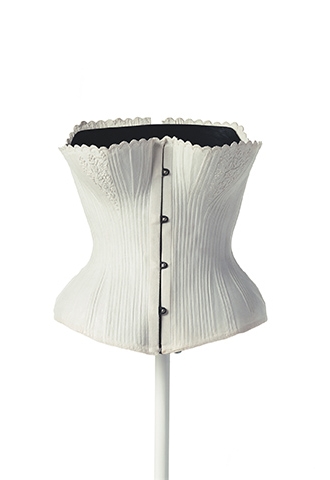
Corset c. 1870 © The Kyoto Costume Institute Photo by Takashi Hatakeyama -
Chapter 3.Just the Way We Are
We also feel the desire to just be ourselves as we play various roles in society. Will we ever be able to realize the dream of Jean-Jacques Rousseau, who, back in the eighteenth century, advocated naturalism and pursued the ideal of depicting the natural self.
The 1990s was a time when the photographs of Wolfgang Tillmans who captured the everyday lives of his friends resonated with many, while the designs of the garments shown by emerging brands of the time such as Prada and Helmut Lang were based on our actual physical shape, rather than the idealized physical forms which were an extension of traditional Western aesthetics. These designers’ garments represented the human form, brazenly revealing glimpses of dowdy underwear, and represented a positive acceptance of the ordinary. The questioning of accepted values and the aim towards a coexistence of diverse values are not unrelated to the “body positive” movement that began to intensify from the early 2010s and the “body neutral” concept which followed. While the keyword “diversity” was tied to these two trends and had a massive social influence, it also conveyed the challenge and difficulty of accepting one’s body “as is” and raised the question of what exactly the natural self represents. In Tomona Matsukawa’s paintings which depict the reality of women living in these times, we have a glimpse into the reality of the complex society in which we find ourselves.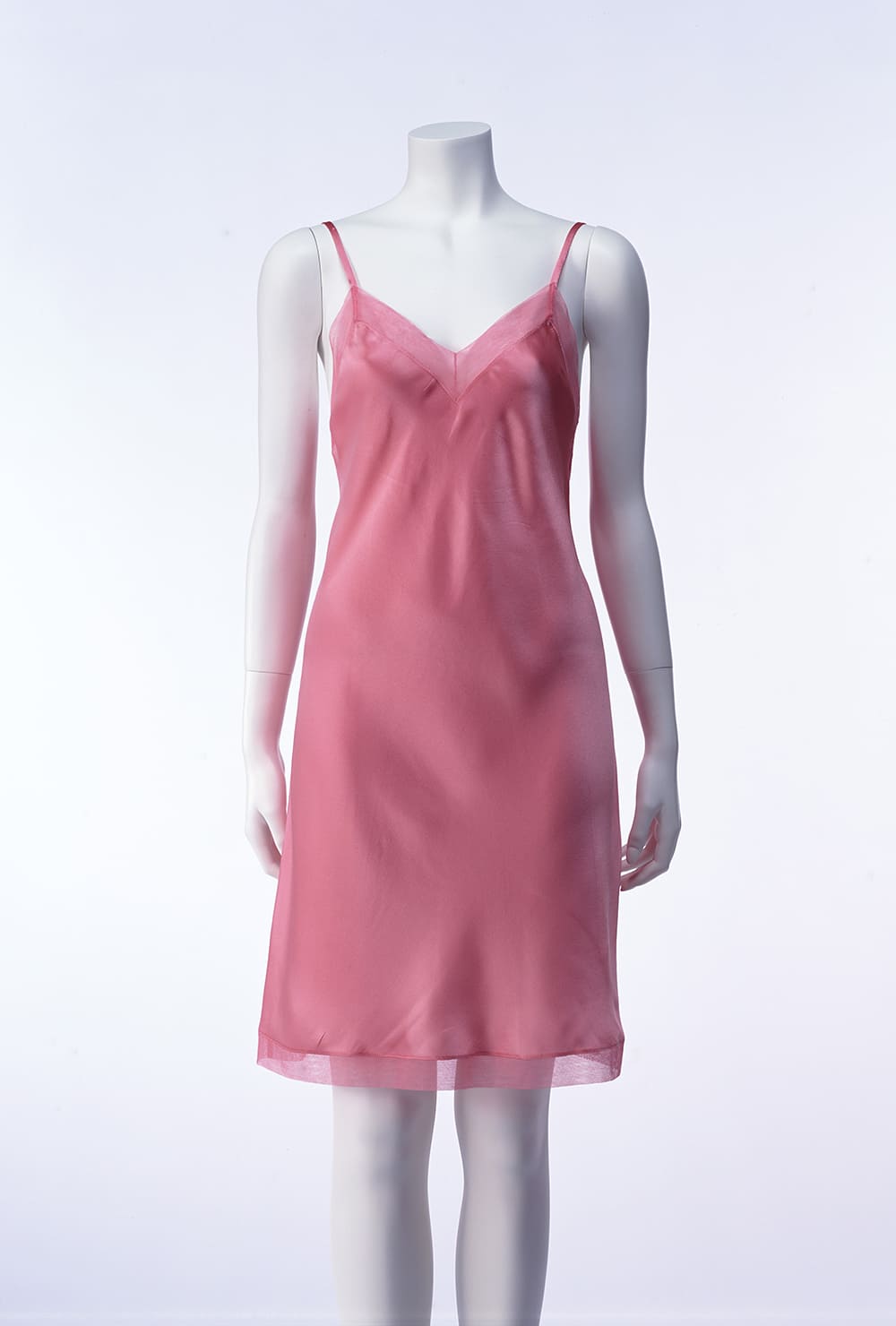
Prada / Miuccia Prada Slip 1998 © The Kyoto Costume Institute Photo by Takashi Hatakeyama -
Chapter 4.Break Free
Language, nationality, ethnicity, religion, culture, class, occupation, age, gender differences....
As a part of this predetermined narrative, we often use clothing to project an identity to define a self that is in fact non-existent. It is arguably because we can talk about ourselves through clothing as language (=metaphor) that we can position ourselves within society or share how we feel with others.
Clothing can be eloquent, but at times it becomes associated with “me” and binds us to that narrative. We share a desire to escape from such a “me” narrative. Virginia Woolf, in her novel Orlando (1928), was a pioneer in her attempt to brilliantly depict the release from our inherent identity and to have choices. Rei Kawakubo, who has continually defied uncomfortable restrictions or norms through her clothing, showed the trilogy of designs─her women’s collection, men’s collection and costumes for opera Orlando on the occasion of the 150th anniversary of the Vienna State Opera. Arguably, they indicate the extent to which Woolf, who struggled as she lived in an oppressive society, resonated with the designer who remains the flag bearer of innovation and liberation.
These “women” transcend time and resonate with each other in celebration of the story of Orlando who struggled with her transformation over 300 years ago and who shook off the idea of dressing up as “me.” Freedom is not so much a desire for an imaginary utopia, but a statement that it is, in fact, our very own life as “ourself” that undergoes change on a daily basis.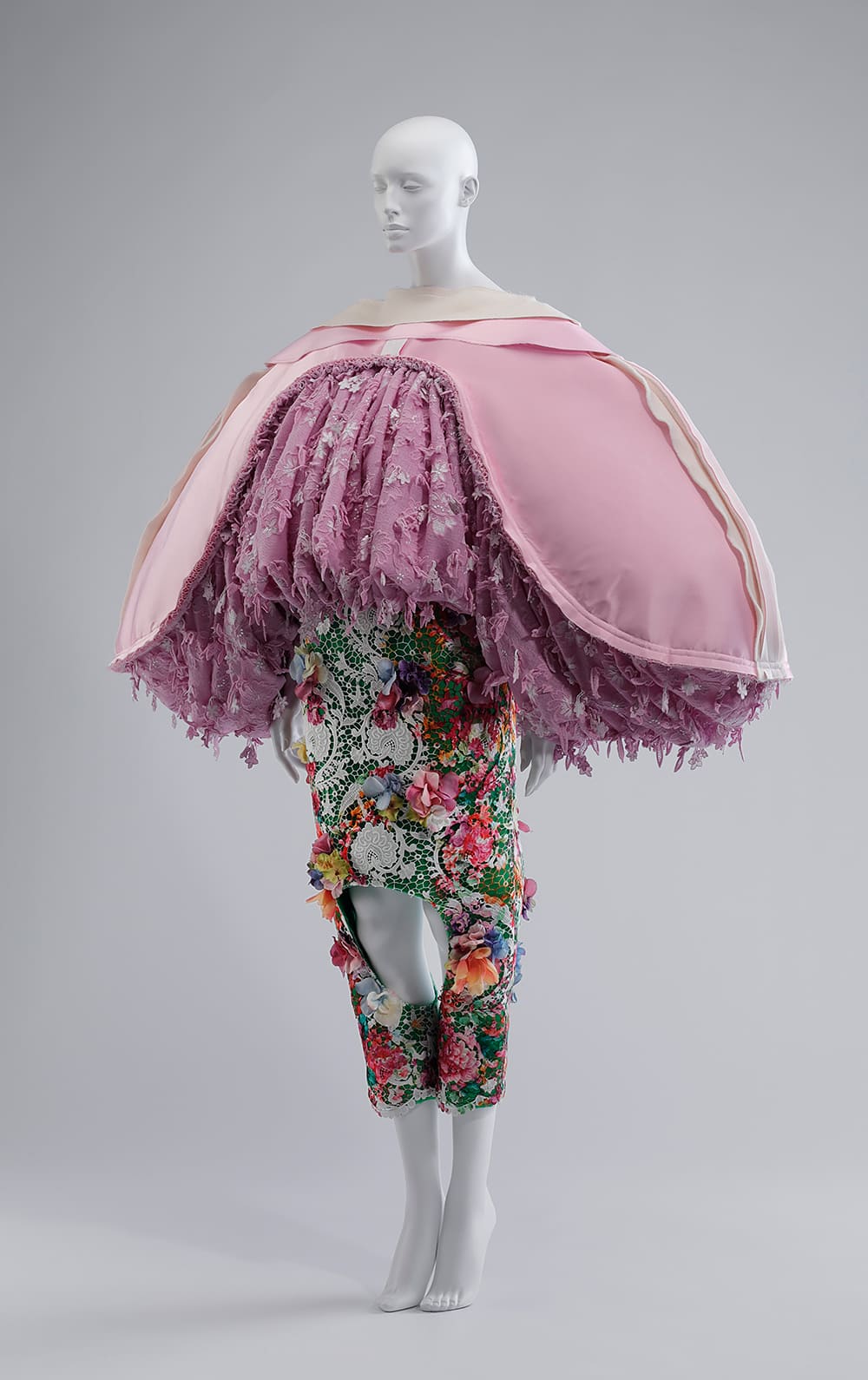
Comme des Garçons / Rei Kawakubo Top and Pants Spring/Summer 2020 © The Kyoto Costume Institute Photo by Takeru Koroda -
Chapter 5.Take Me Higher
I am me. But I am dreaming of myself as someone that is somehow different from the way I am now. Humans have had a desire to transform themselves into another creature that is not human, as seen in the clothing of designers and brands such as House of Worth and Alexander McQueen. Or experiencing the pleasure of being our other self in a new virtual reality through games or on social media, in which we have separated from our bodies and attributes, as in the designs of Balenciaga or Threeasfour. And, as the result of clothes which are not clothes, such as the designs by Tomo Koizumi featuring frills or Viktor & Rolf featuring ribbons, which have risen above the type of clothes that we wear in our everyday lives, we can experience the excitement of imagining how we would feel if we were to wear a certain garment, or to experience the feeling of being someone different from oneself when we put on a garment, or the ecstasy of encountering a self that is more like oneself. Clothes have the power to cast a spell on each and every one of us.
It is difficult for people to stop feeling this way, having these sensations. Even the garments that you yearned for, the garment that you thought was perfect for yourself, will suddenly seem jaded, after which you go on to seek another new garment. It is as if you have been taken over by something that is not yourself, and something that is not you has taken control of you. Like Hans Christian Andersen’s Red Shoes or like a Loewe garment in which the body has been taken over by lips.
Perhaps we are projecting our interminable human desire onto the hermit crabs that change their “dwelling,” like the crabs that appear in AKI INOMATA’s works. The spell of clothes and our never-ending desire. When the “I” that had been forgotten returns after being released from the spell cast by clothing, perhaps we come under the spell of a new kind of magic. Or perhaps magic is the hell that is never-ending human desire.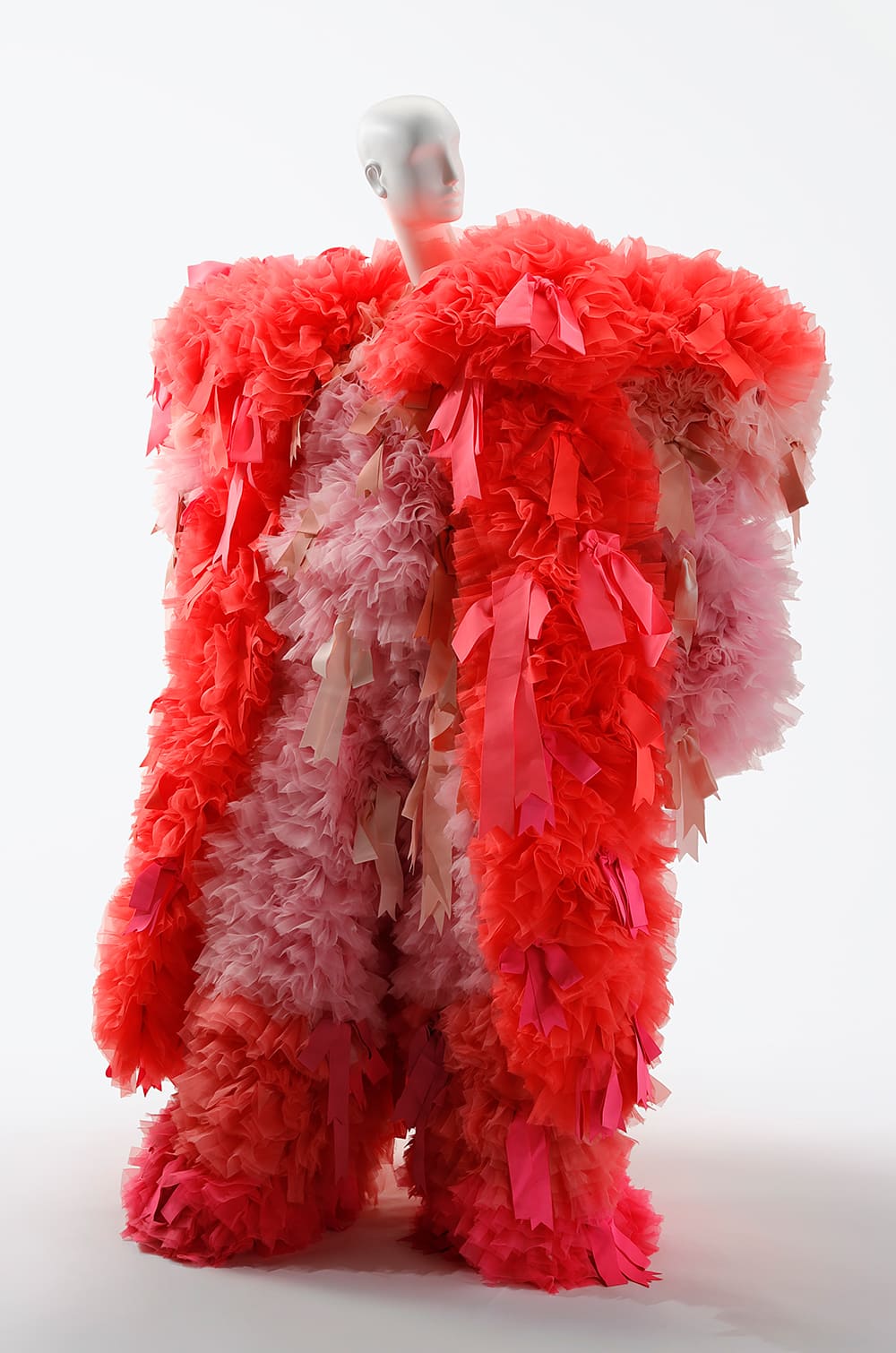
Tomo Koizumi / Tomotaka Koizumi Jumpsuit Spring/Summer 2020 © The Kyoto Costume Institute Photo by Takeru Koroda
Selected Exhibits
The exhibition is composed of carefully selected garments from the Kyoto Costume Institute (KCI), which researches and collects fashion spanning from the 18th century to the present, alongside art pieces that illuminate the fundamental desires and instincts of human beings.
-

Hat (Canotier) 1970 © The Kyoto Costume Institute Photo by Taishi Hirokawa -

J. C. de Castelbajac / Jean-Charles de Castelbajac Coat Autumn/Winter 1988 © The Kyoto Costume Institute Photo by Takeru Koroda -

Balenciaga / Cristóbal Balenciaga Evening Dress Winter 1951 © The Kyoto Costume Institute Photo by Takashi Hatakeyama -
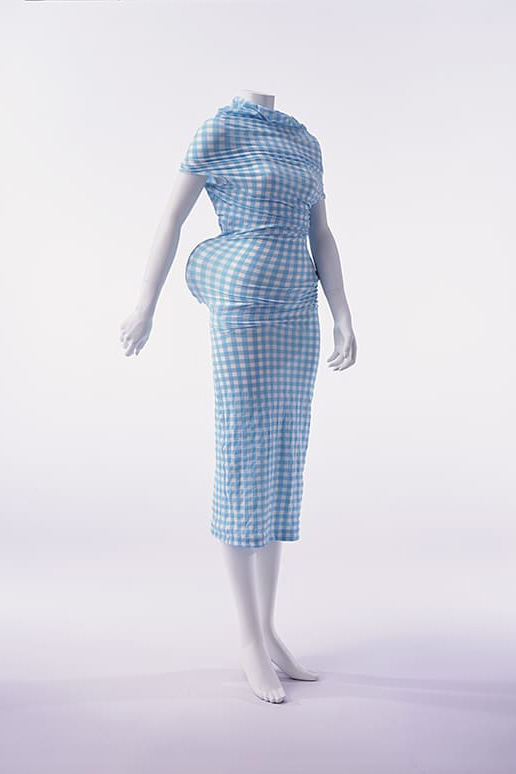
Comme des Garçons (Rei Kawakubo) Spring/Summer 1997 © The Kyoto Costume Institute Photo by Takashi Hatakeyama -

Sylvie Fleury No Man ’s Time 2023 © Sylvie Fleury Courtesy of the artist and Sprüth Magers -
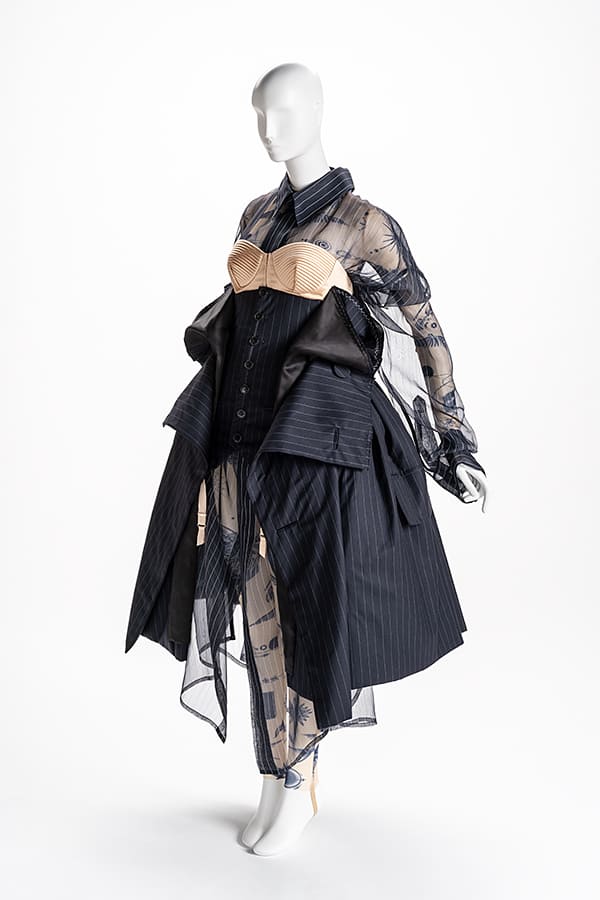
Gaultier Paris by sacai / Jean-Paul Gaultier, Chitose Abe Dress, Shirt, T-shirt, and Leggings Autumn/Winter 2021 Haute Couture © The Kyoto Costume Institute Photo by Yuki Moriya
-

Helmut Lang / Helmut Lang Low Cut Strap Dress Spring/Summer 2004 © The Kyoto Costume Institute Gift of Helmut Lang Photo by Yuki Moriya -
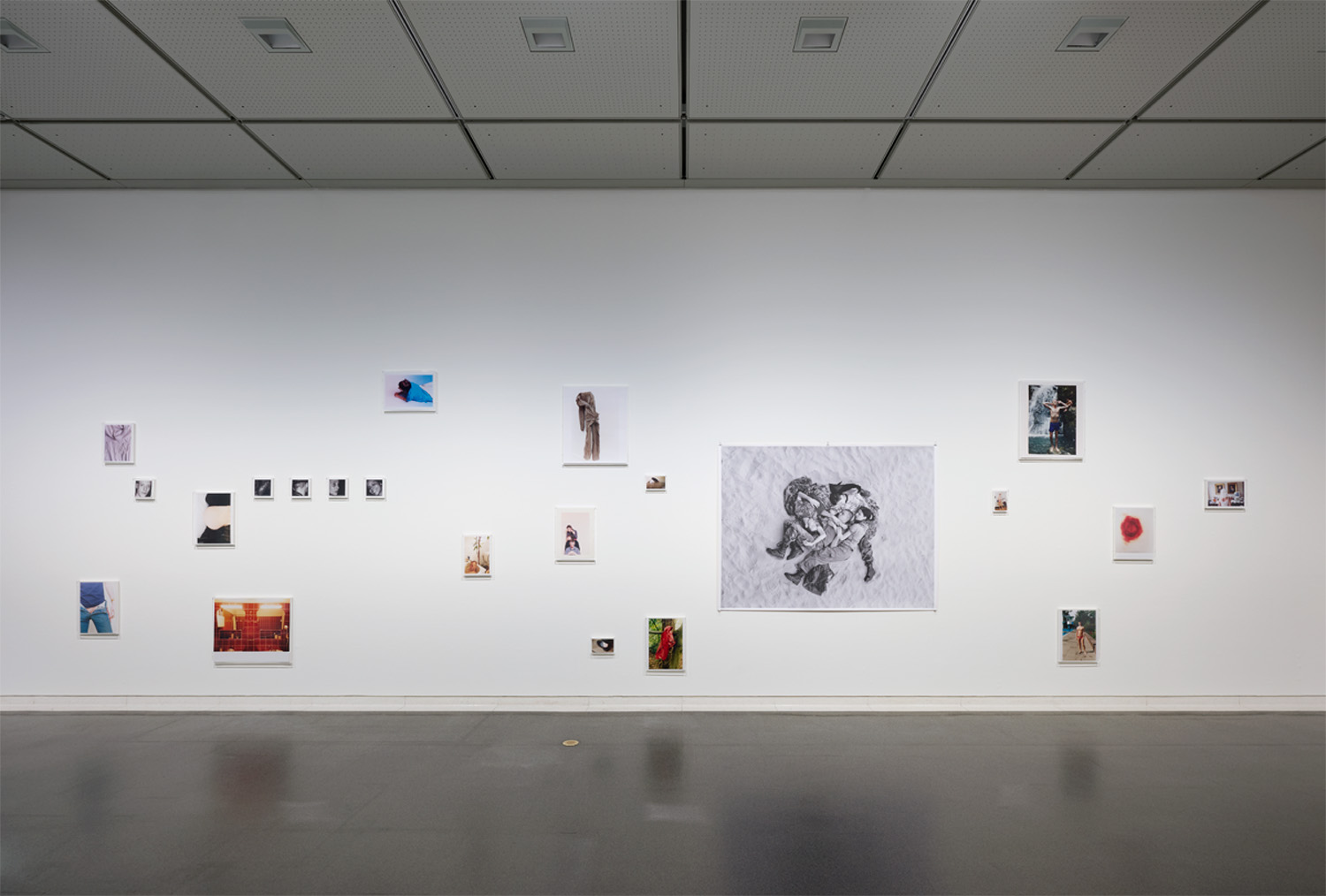
Wolfgang Tillmans Kyoto Installation 1988-1999 2000 Collection of the National Museum of Modern Art, Kyoto Photo by Takeshi Asano
-
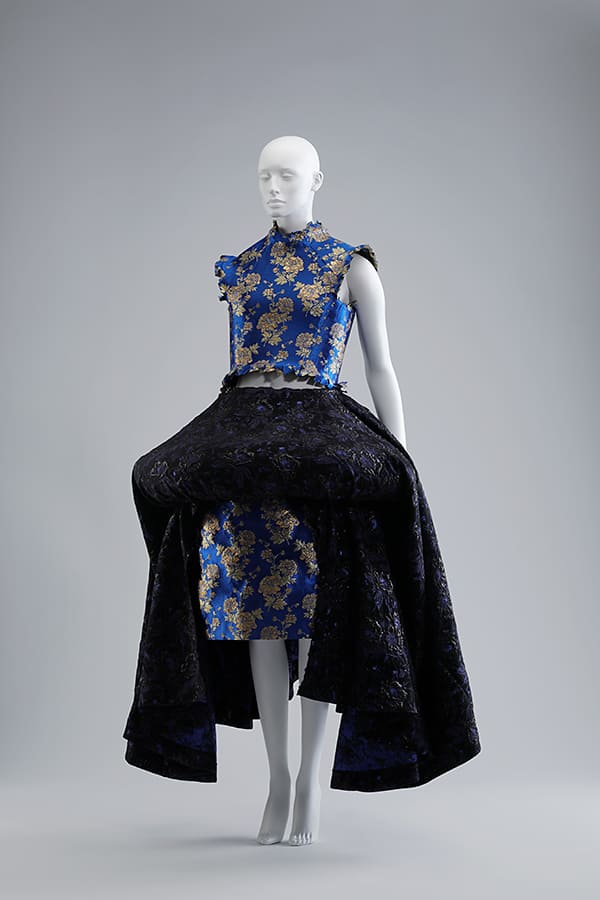
Comme des Garçons / Rei Kawakubo Top and Pants Spring/Summer 2020 © The Kyoto Costume Institute -
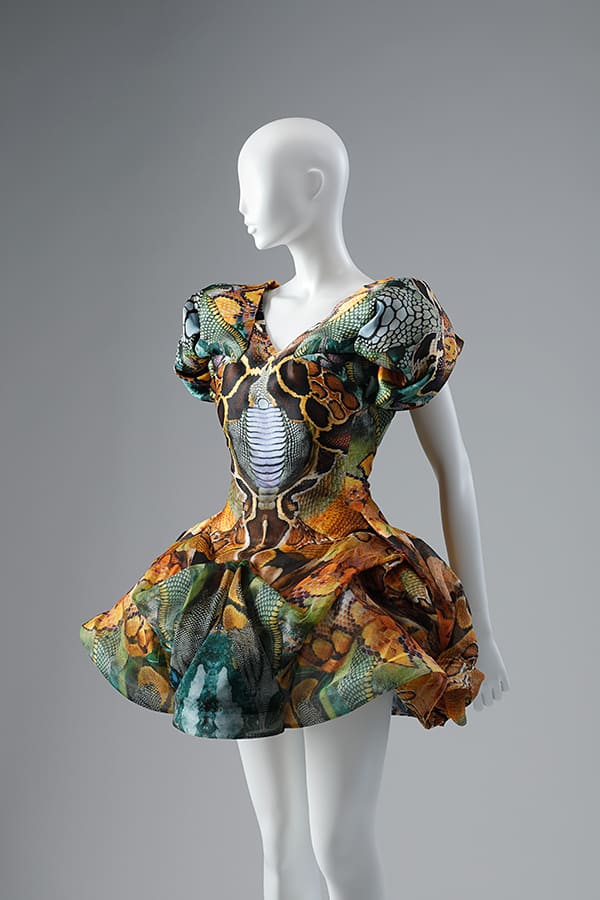
Alexander McQueen / Alexander McQueen Dress Spring/Summer 2010 © The Kyoto Costume Institute Photo by Takeru Koroda -
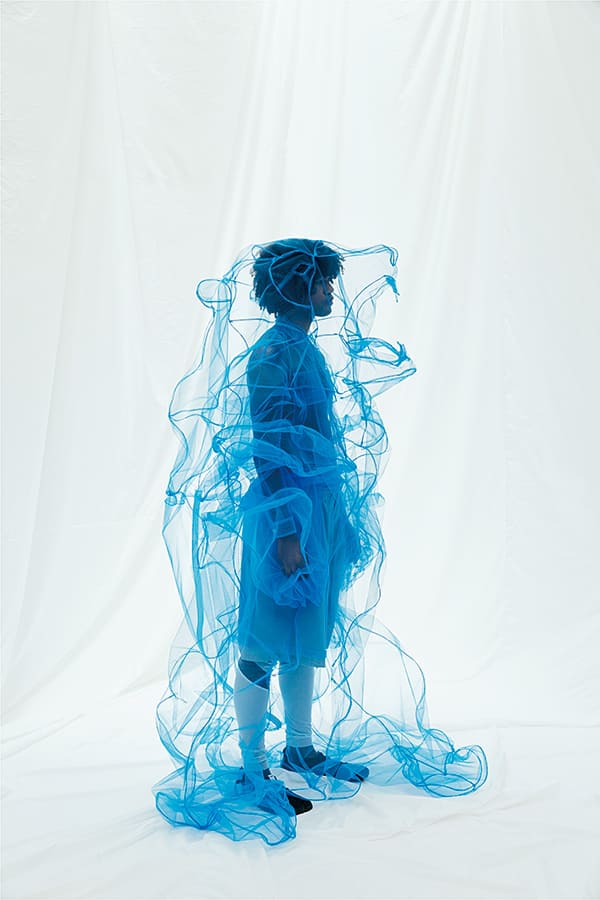
Yoshiokubo / Yoshio Kubo Overdress, Shirts, Pants, and Leggings Spring/Summer 2023 © groundfloor Co., Ltd. Photo by Tetsuo Kashiwad -
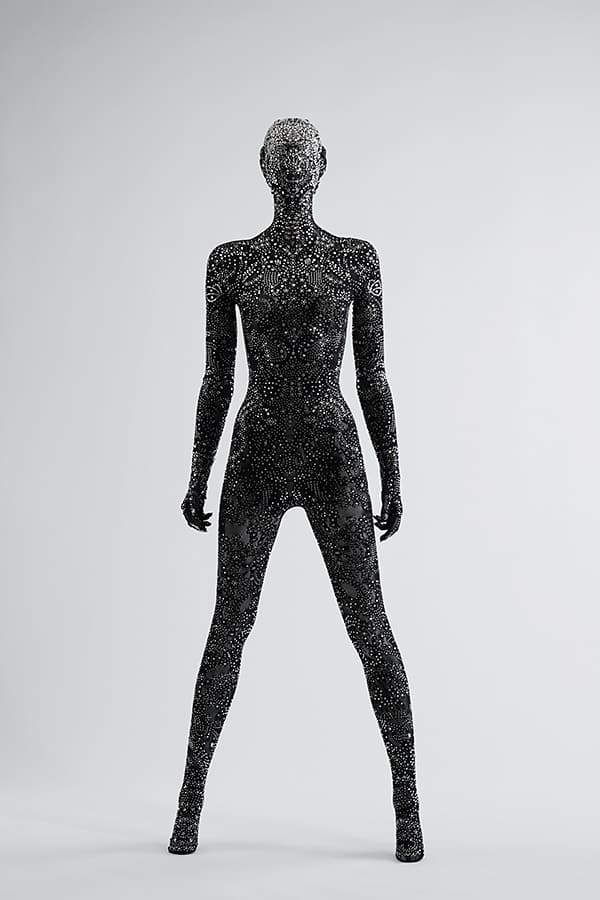
Somarta / Tamae Hirokawa Body Wear Skin Series “Protean” 2007 © The Kyoto Costume Institute Photo by Takeru Koroda -
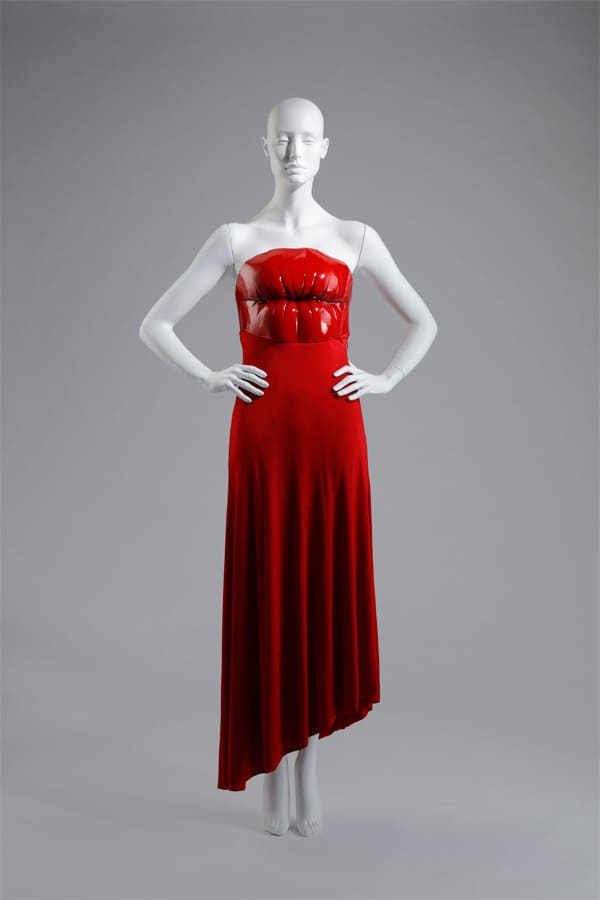
Loewe / Jonathan Anderson Dress Autumn/Winter 2022 © The Kyoto Costume Institute Photo by Takeru Koroda -
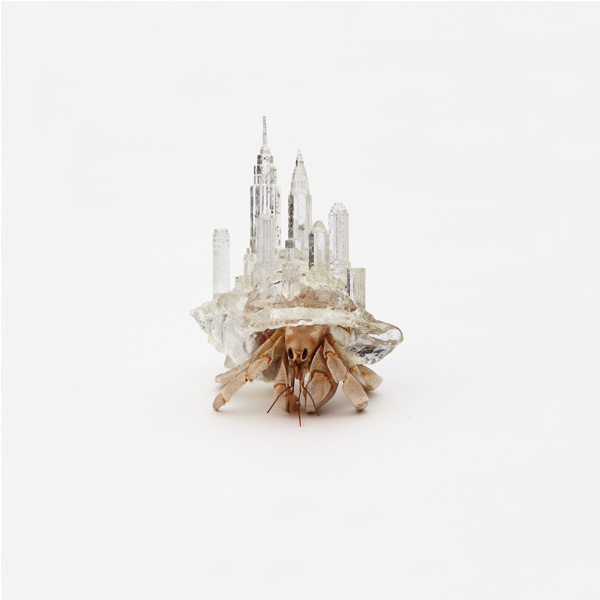
AKI INOMATA Why Not Hand Over a “Shelter” to Hermit Crabs? -Border- (New York City) 2010 Private collection © AKI INOMATA
Fashion: Alexander McQueen (Alexander McQueen), Balenciaga (Cristóbal Balenciaga, Demna Gvasalia), Bottega Veneta (Daniel Lee), Céline (Phoebe Philo), Chanel (Gabrielle Chanel, Karl Lagerfeld), Christian Dior (Christian Dior, John Galliano), Comme des Gar çons (Rei Kawakubo), Comme des Garçons Homme Plus (Rei Kawakubo), Gaultier Paris by sacai, Givenchy (Alexander McQueen), Gucci (Tom Ford), Helmut Lang (Helmut Lang), House of Worth, J. C. de Castelbajac (Jean-Charles de Castelbajac), Jil Sander (Raf Simons ), Junya Watanabe, Kimhēkim (Kiminte Kimhekim), Kostas Murkudis, Loewe (Jonathan Anderson), Louis Vuitton (Marc Jacobs), Madeleine Vionnet (Madeleine Vionnet), Maison Margiela (Martin Margiela, John Galliano), Mame Kurogouchi (Maiko Kurogouchi), Nensi Dojaka, Noir Kei Ninomiya (Kei Ninomiya), Noritaka Tatehana, Pierre Balmain (Pierre Balmain), Prada (Miuccia Prada), Ryunosukeokazaki (Ryunosuke Okazaki), Somarta (Tamae Hirokawa), Stella McCartney, Thierry Mugler, Threeasfour (Gabriel Asfour, Angela Donhauser, Adi Gil), Tomo Koizumi (Tomotaka Koizumi), Viktor & Rolf (Viktor Horsting, Rolf Snoeren), Yohji Yamamoto, Yoshiokubo (Yoshio Kubo) etc.
Art: Sylvie Fleury, Yuki Harada, AKI INOMATA, Emiko Kasahara, Tomona Matsukawa, Motohiko Odani, Tomoko Sawada, Wolfgang Tillmans, Nami Yokoyama
Exhibition Information
-
Dates
-
December 21 (Fri.), 2024–March 2 (Sun.), 2025
-
Closed
-
Tuesdays, from December 30 to January 3, and February 12 (Wed.) *opened on February 11 (Tue.)
-
Opening Hours
-
10:00 AM – 8:00 PM (admission until 7:30 PM)
-
Venue
-
Contemporary Art Museum, Kumamoto
-
Admission
-
- Adult:
- ¥1300 (¥1100)
- Seniors (65 and over):
- ¥1000 (¥800)
- Students (the high school students and over):
- ¥800 (¥600)
- Junior high school students and under:
- Free
*The admission given in parentheses are for advance tickets / group (20 or more) / with one-day ticket for tram or buss, etc.
*Advance tickets will be on sales until December 20 (Fri.)
*Persons presenting various disability certificates (Physical Disability Certificate, Medical Rehabilitation Handbook, Mental Disability Certificate, Atomic Bomb Survivor’s Certificate, etc.) and one accompanying person are free of charge.
*Persons presenting a Welcome Passport are free of charge.
-
Organizer
-
Contemporary Art Museum, Kumamoto, The Kyoto Costume Institute, Kumamoto Nichinichi Press
-
Special cooperation
-
Wacoal Corp.
-
Cooperation
-
NANASAI CO., LTD., Lecien Corporation, YOSHICHU MANNEQUIN CO., LTD, Yamato Transport Co., Ltd.
-
Grant
-
The Obayashi Foundation, The Swiss Arts Council Pro Helvetia
-
Support
-
Kumamoto Prefecture, Kumamoto Prefectural Board of Education, Kumamoto City Board of Education, Kumamoto Ken Bunka Kyokai (Cultural Association of Kumamoto), Kumamoto Ken Bijutsuka Renmei (Artist’s Union of Kumamoto), Kumamoto International Convention and Tourism Bureau, NHK Kumamoto, J:COM Kumamoto, FMK, FM791, Embassy of Switzerland in Japan
-
Official website
-
Traveling
-
The National Museum of Modern Art, Kyoto
September 13–November 24, 2024Tokyo Opera City Art Gallery
April 16–January 22, 2025
Installation View
Photo by Shintaro Yamanaka (Qsyum!)
